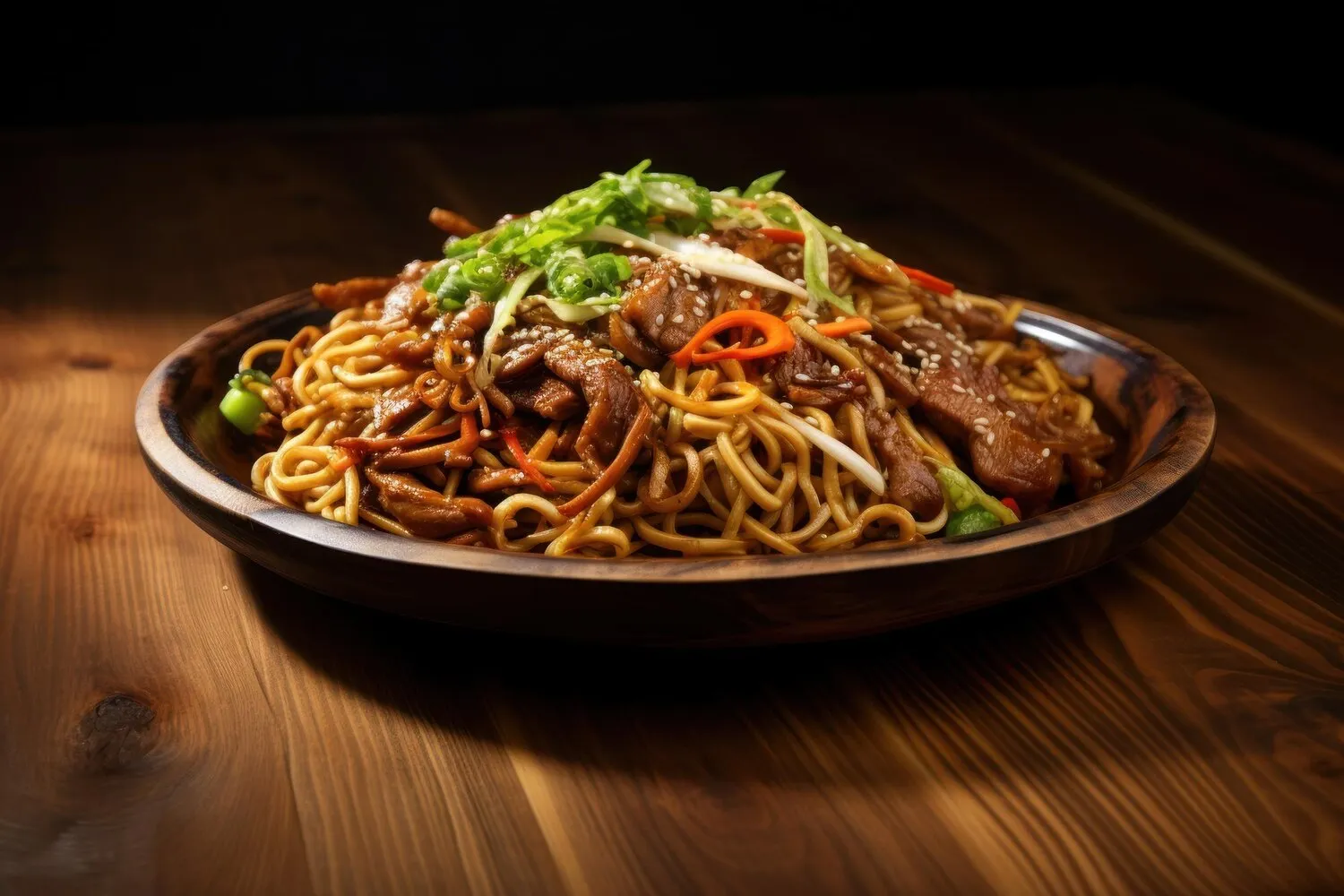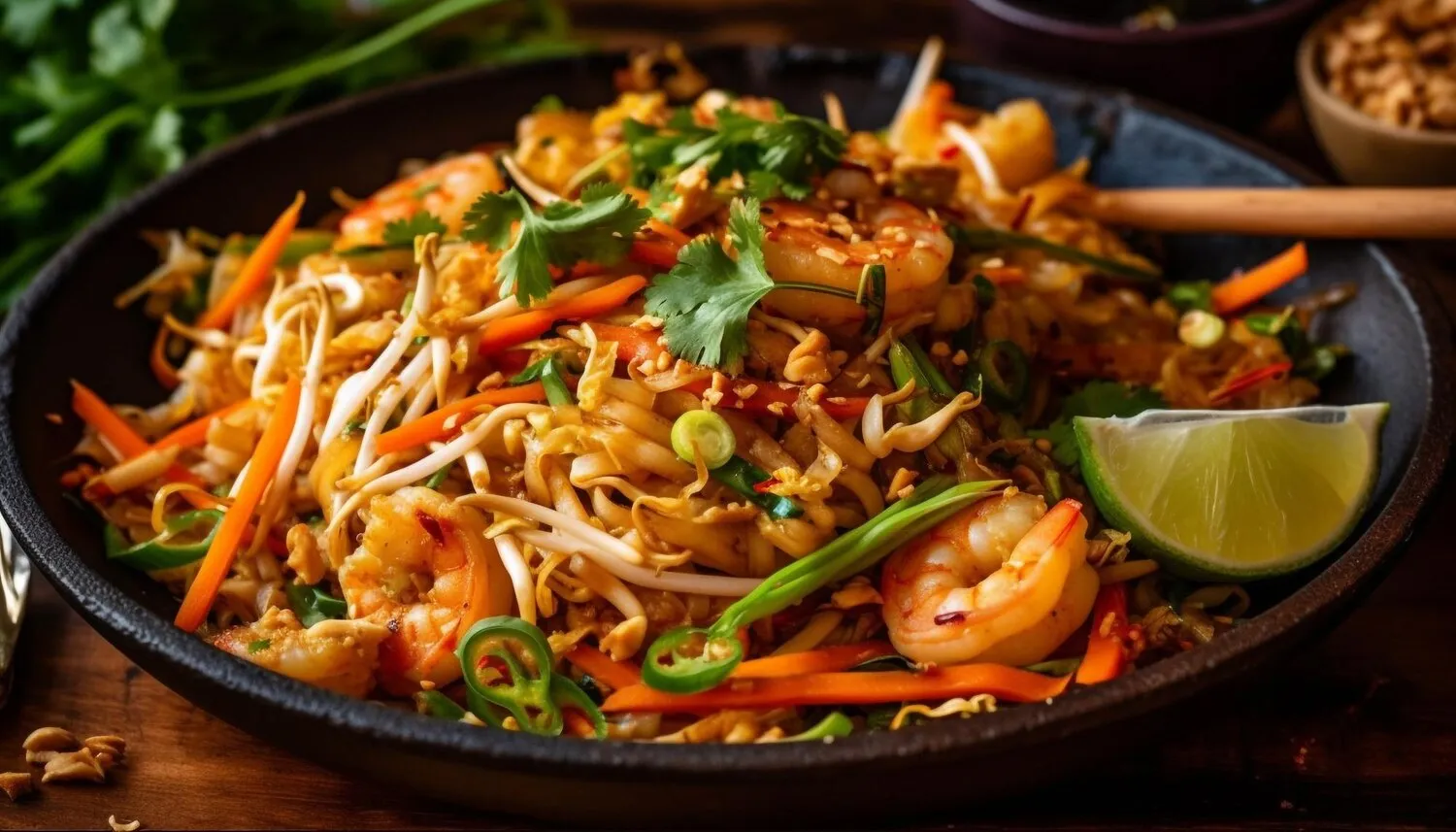
Yakisoba
Stir-fried noodles with vegetables and protein (chicken, beef or shrimp)
Nutrition Facts
* The % Daily Value (DV) tells you how much a nutrient in a serving of food contributes to a daily diet. 2,000 calories a day is used for general nutrition advice.
Yakisoba's origins are somewhat murky, but it's generally believed to have emerged in the post-World War II era, influenced by Chinese stir-fried noodle dishes. The dish gained popularity as a quick, affordable, and satisfying meal during a time of economic recovery in Japan.
Yakisoba is a ubiquitous dish in Japanese cuisine, enjoyed as a street food, festival fare, and a home-cooked meal. It's associated with casual dining, community events, and its adaptability makes it a popular choice for various occasions.
Street Food Staple
Yakisoba is a very popular street food, often sold at festivals (matsuri) and other outdoor events. It's a convenient and affordable option for a quick and tasty meal.
Teppanyaki Restaurants
Yakisoba is frequently found on the menu at teppanyaki restaurants, where it is cooked on a large iron griddle in front of the customers, adding an element of entertainment to the dining experience.
Home Cooking
Yakisoba is also a common home-cooked meal in Japan. It's easy to prepare and can be customized with various ingredients based on personal preferences and available resources.
Yakisoba offers a savory and slightly sweet flavor profile, achieved through the use of a specialized yakisoba sauce. The flavors are complemented by the umami from the meat (typically pork, chicken, or seafood) and the fresh, slightly bitter notes of the vegetables.
The key flavor component is yakisoba sauce, a Worcestershire-based sauce that provides a tangy, sweet, and savory base. The sauce typically includes ingredients like soy sauce, oyster sauce, ketchup, and various spices. The noodles, often pre-cooked and steamed wheat flour noodles, absorb the sauce, creating a rich and satisfying taste. Common vegetables include cabbage, onions, carrots, and bean sprouts, adding texture and freshness. Protein choices like pork, chicken, or shrimp contribute savory depth.
Noodle Selection
Use pre-cooked, steamed yakisoba noodles for the best results. These noodles are specifically designed to absorb the sauce without becoming soggy.
Sauce Application
Add the yakisoba sauce gradually towards the end of the cooking process. This prevents the sauce from burning and ensures that the noodles are evenly coated.
High Heat Stir-Frying
Stir-fry the ingredients at high heat to achieve a slightly charred flavor and prevent the vegetables from becoming too soft. Use a wok or a large skillet for even heat distribution.
Don't Overcrowd the Pan
Stir-fry in batches if necessary to avoid overcrowding the pan, which can lower the temperature and lead to steaming rather than stir-frying.
Explore additional Noodles dishes and restaurants
Explore NoodlesDiscover top dining spots and culinary experiences in Porto Alegre.
Explore Porto AlegreLearn more about the food culture, restaurant scene, and culinary heritage of Brazil.
Explore Brazil
